If Rock Island Auction Company claims this area of Illinois to be the ‘gun mecca’ of the United States (with 5 firearm companies within the immediate vicinity), then Rock Island Arsenal is certainly the beginning of that influx of that concentration of firearms companies. Today, it is still an active duty U.S. Army post that conducts research and development for a wide variety of services within the U.S. Military. The mission statement consists of,
Provide quality facilities and excellent base operations support and services to all installation tenants in the areas of law enforcement, crime prevention, security management, fire, safety, information management, facilities engineering, housing, maintenance of buildings and roads, and transportation
Notice the research and development of arms and ammunition wasn’t really covered in that at all? That is because although small arms are important to the history of the island, they aren’t the only topic of research that the island goes on about. There is a swath of other devices and topics that the researchers at Rock Island Museum devote their time to as well as small arms. The museum director, Kris Leinicke makes a point about that in talking about the collection, “Small Arms have always been a small portion of the Rock Island experience, so we have our massive small arms as a sort of catch to draw people in, and then learn about the rest of the island’s history as they explore the museum”.
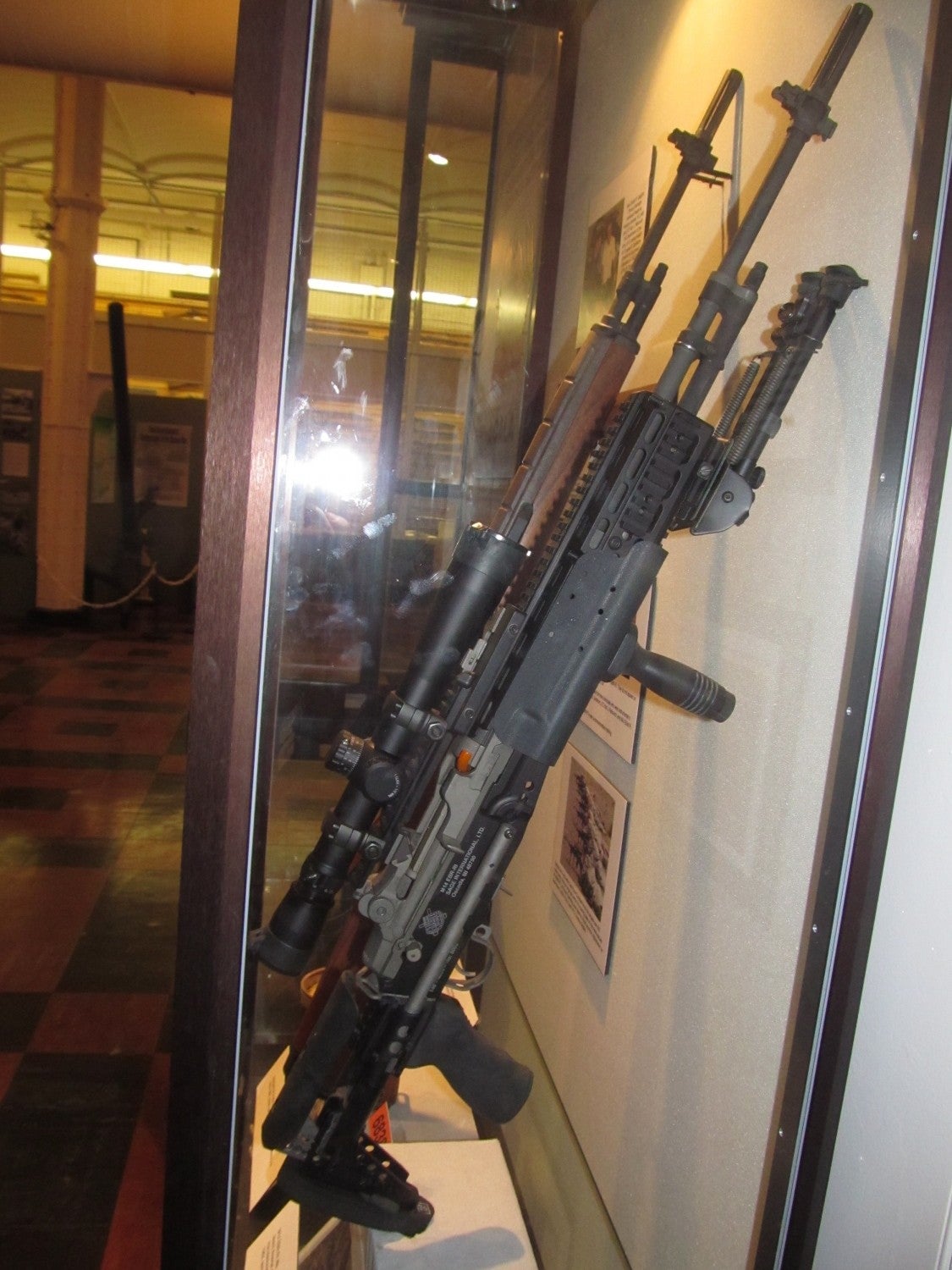
Readers will know Rock Island Arsenal’s most recent contribution to the field of small arms in the Mk 14 Enhanced Battle Rifle, or EBR. Rock Island churned out 5,000 of such converted M14s for the program, this specific one has a serial number combination that adds up to the number 5000. This project really exemplifies how more and more of the weapons research is going into private companies instead of staying within government circles. The EBR is a rare example of a government top to bottom program, unlike Remington’s answer to the updated M25 Sniper Rifle skelentonized stocks and the PSR contract.
The arsenal has an extremely interesting history which goes back to the beginnings of the United States. As the Western frontier began to expand past the Ohio territory and what is currently the states of Indiana and Illinois, conflict with the various Native American tribes began to occur and become more violent. Rock Island held an extremely strategic position in being an island of significant size in the middle of the Mississippi River, dividing what would later become Indiana and Illinois. Through some shady dealings, the U.S. Government acquired Rock Island off of a purchase and began to station troops on the island. At this point in time the Western frontier resembled more of a war zone than a new country. Rock Island was one of many frontier posts stationed in a north to south line to protect various trading stations and the edge of the nation itself.
As the frontiers pushed further West, the various other forts and stockades closed down while Rock Island remained in operation due to the importance of the location. However its importance as an actual arsenal didn’t begin until the break out of the Civil War. Being on the Mississippi allowed the shipment of supplies either up or down the river with ease, as opposed to carrying them over land. Over time the island was requisitioned until the Government owned it entirely. While this was going on, it became a notorious Confederate prisoner of war location as well. Over the next 30 years after the end of the Civil War, the arsenal was built up into one of the largest Government manufacturing plants in the entire country. Many of these buildings were made of stone as well, part of the feeling of expansion that gripped America as apart of Manifest Destiny. The Museum itself was built in 1905, making it the second oldest Museum being run by the U.S. Army.
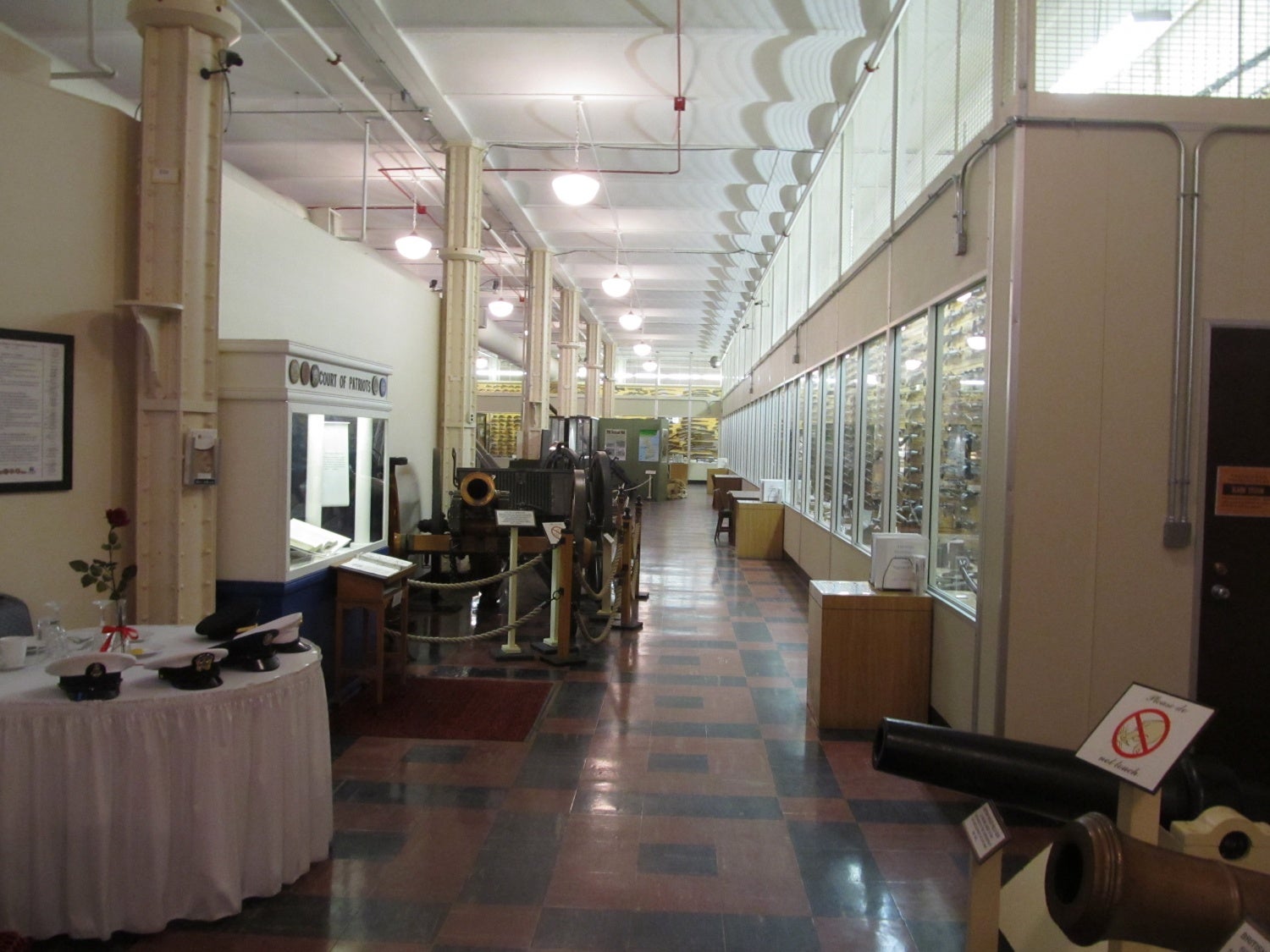
The entrance to the main exhibit hall in the museum. The entire wall on the right and at the rear is completed stacked from floor to ceiling with firearms on display. Descriptions of the various small arms are incorporated within the binders on the right on the various tables.
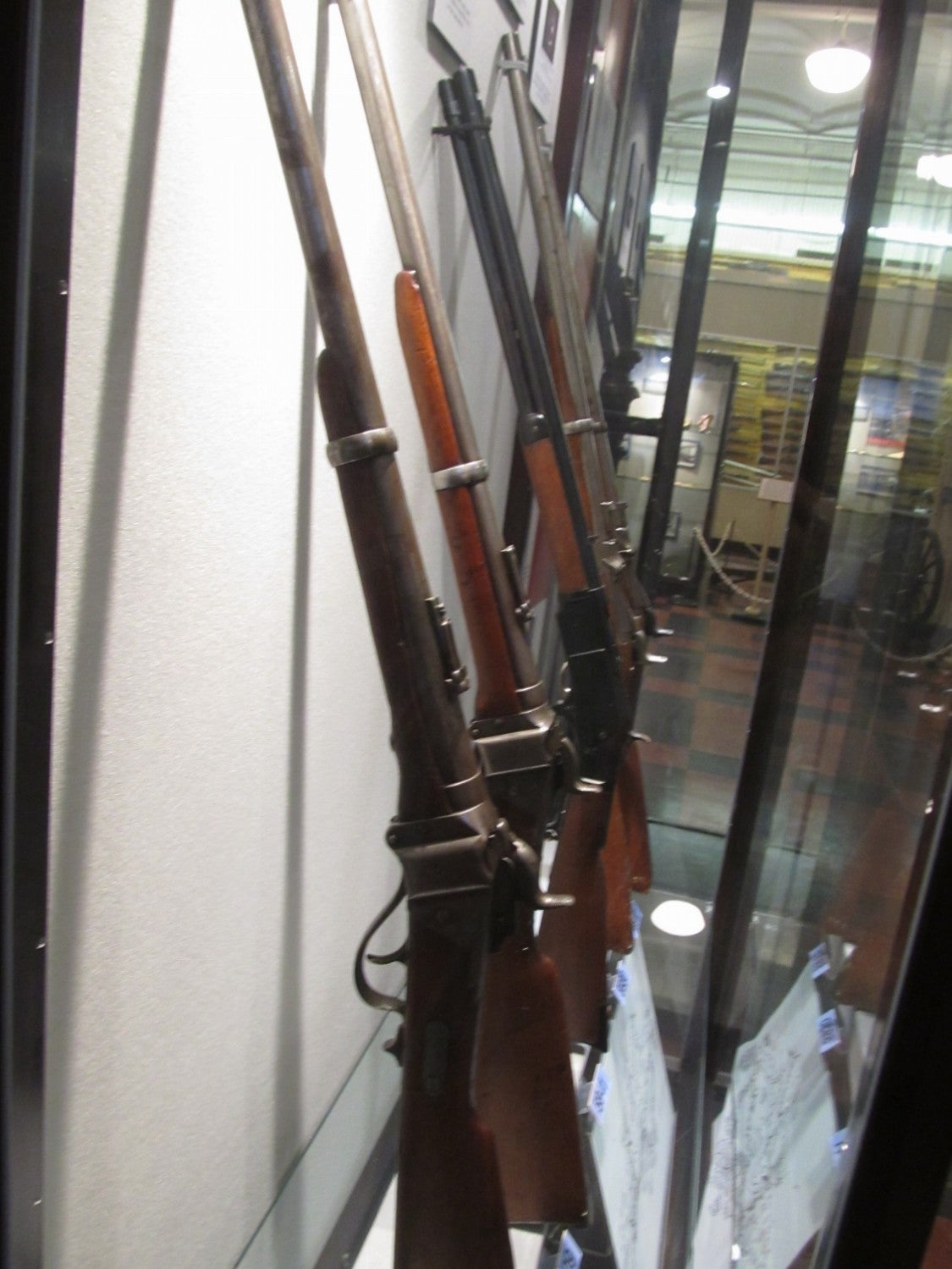
These particular Sharps rifles were apart of a project that took forensic evidence from Custer’s defeat at the Little Big Horn, and used modern science to uncover what happened from a shooting point of view. After a large fire at the scene of the battle scientists were able to find vast amounts of material from the battle that hadn’t been available beforehand. Such as shell casings and bullets. But they were able to track down surviving rifles that were used in the battle and match them up using forensics and see exactly where those rifles were fired throughout the battle. These five rifles are from that project.
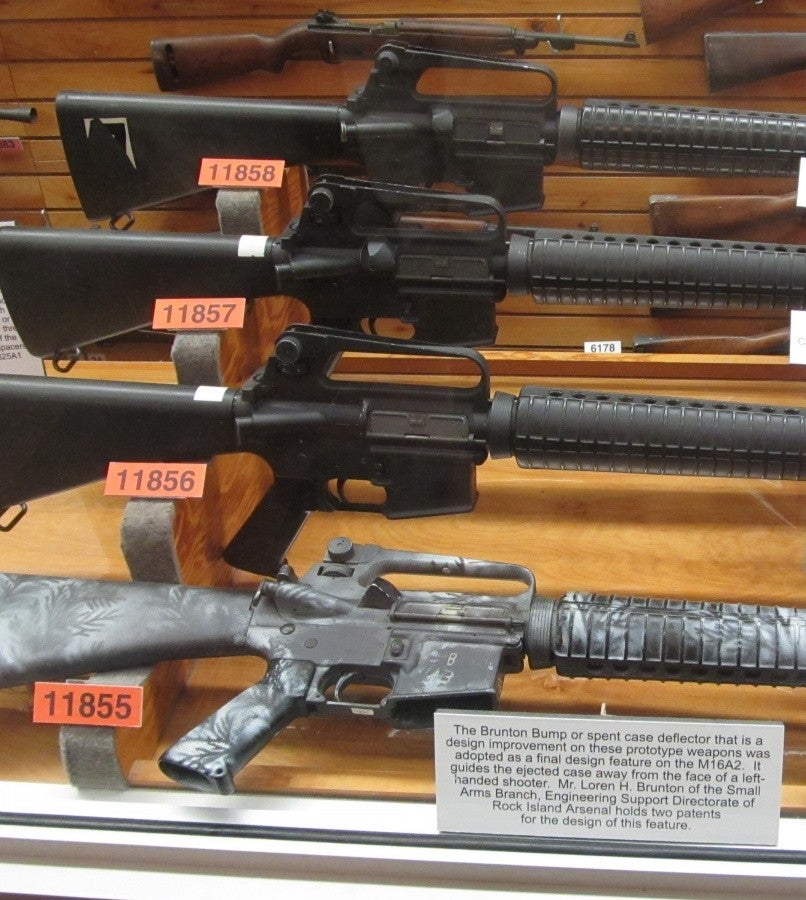
The design of the spent case deflector for the M16A2 was one of the only design improvements that Eugene Stoner wholeheartedly agreed with (the rear sight and handgards he liked, the forward assist he thought was useless). Regardless, the design came from Rock Island and the Museum has several of the prototypes. Rifle second from bottom had the design glued on during the design stage but it had come off sometime afterwards.

“Prototype”, “First of”, and “Unique” are common terms in usage at the RIA Museum. The handguns displayed are from the 1980s trial for the service pistol that eventually became the Beretta M9. Arrayed before the final contenders of Beretta and Sig Sauer, are entries from Smith & Wesson, H&K, Steyr, and various other companies.

This is a gif from the Wikipedia page about the bridge that connects Rock Island with the Illinois and Iowa sides of the river. Seeing that the Arsenal is logistics based, the bridge is also a railroad, with the bottom section for vehicle traffic and the top for trains. Then it can swing open, to allow boat traffic to travel underneath. It even has a name, Government Bridge.
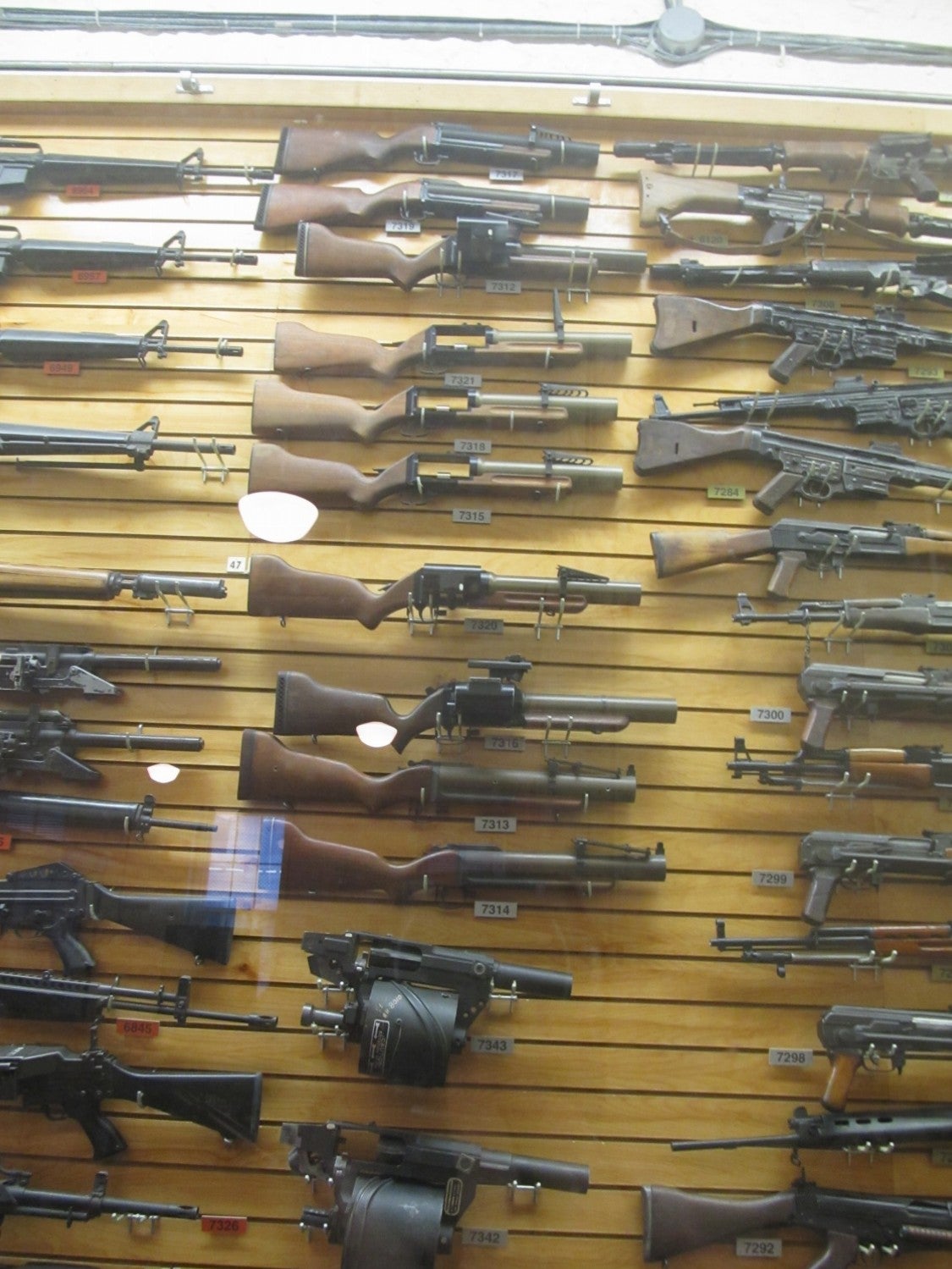
Some of the experimental grenade launchers on display along with captured enemy weapons on the right, with various Stoner weapons on the left (including some 63s and AR18s). I thought the small 40mm grenade launchers at the bottom were the coolest.
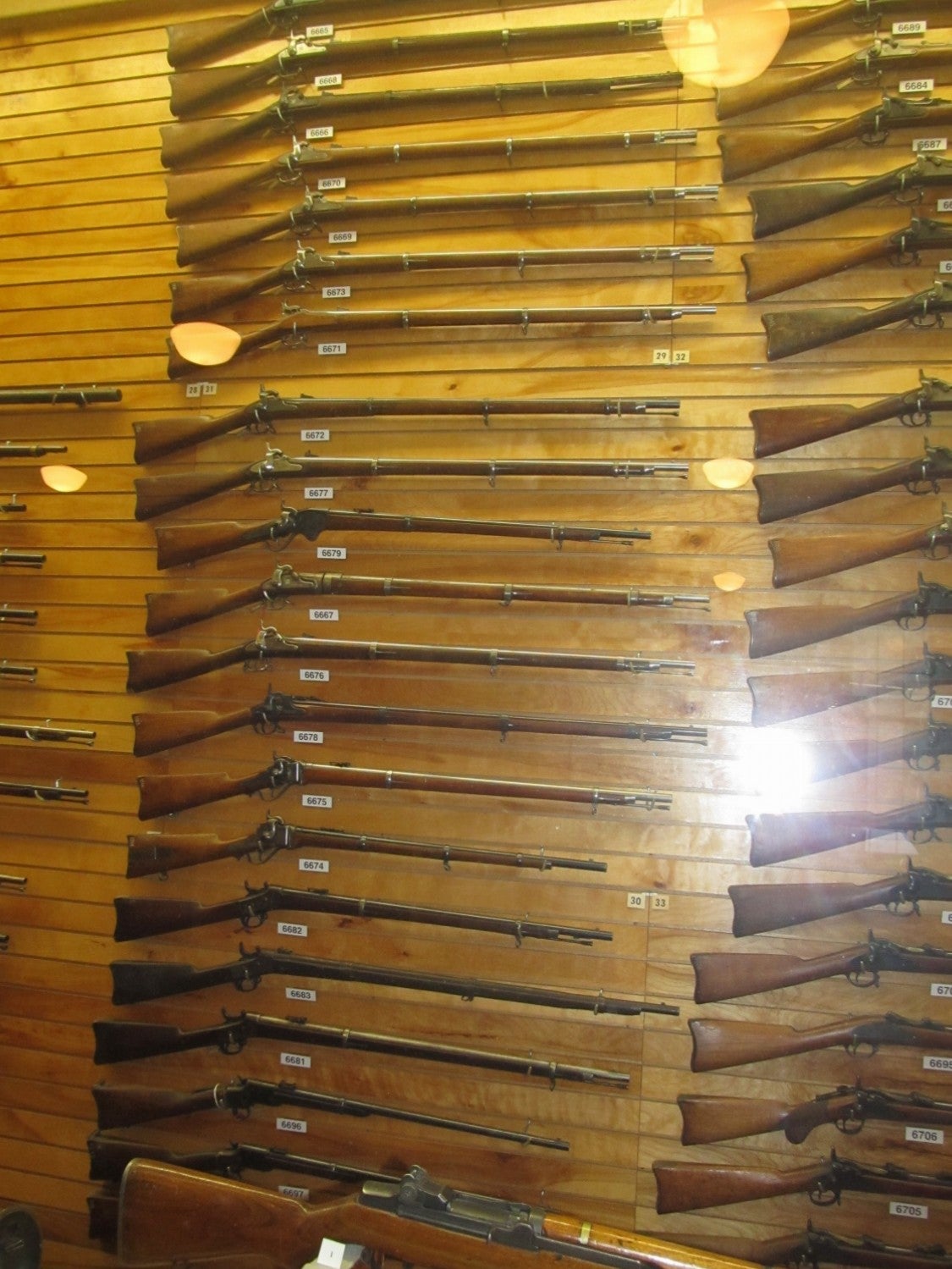
A good portion of the collection is centered around 19th and 18th century arms as well. Some of the older pieces in the collection can be told apart by the white number just barely visible on some of the butt stocks, look closely here at the upper left hand portion of the stocks in this picture.
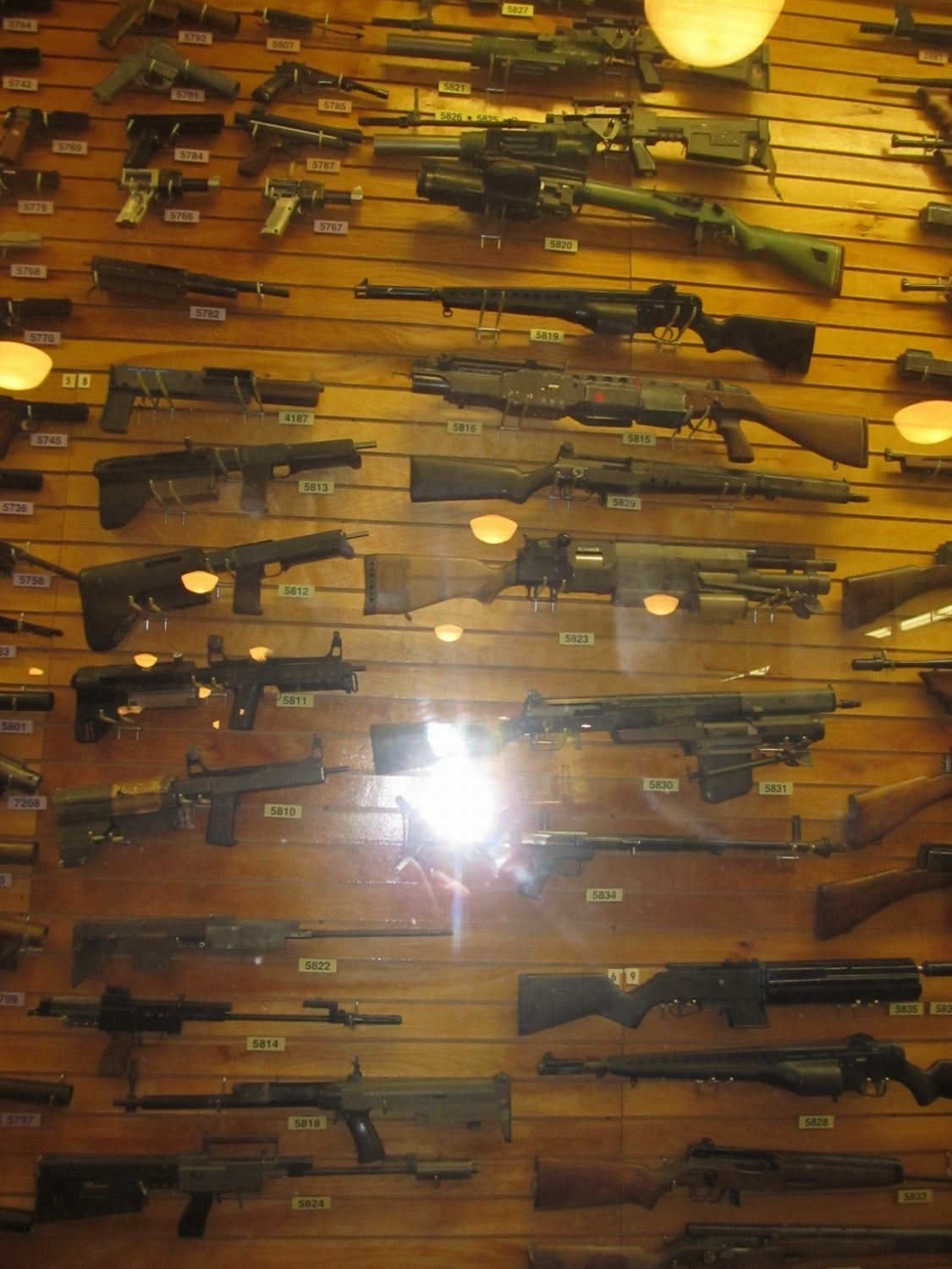
Prototypes galore! I’m not going to even begin naming some of these for fear of misnaming them, although I know there are some SPIW type designs mixed in around here though. The museum has over twelve hundred firearms, and only a certain number are on display, the rest are in storage and available for research by those wishing to come through. As an example most of the machine guns are in storage and not on display.
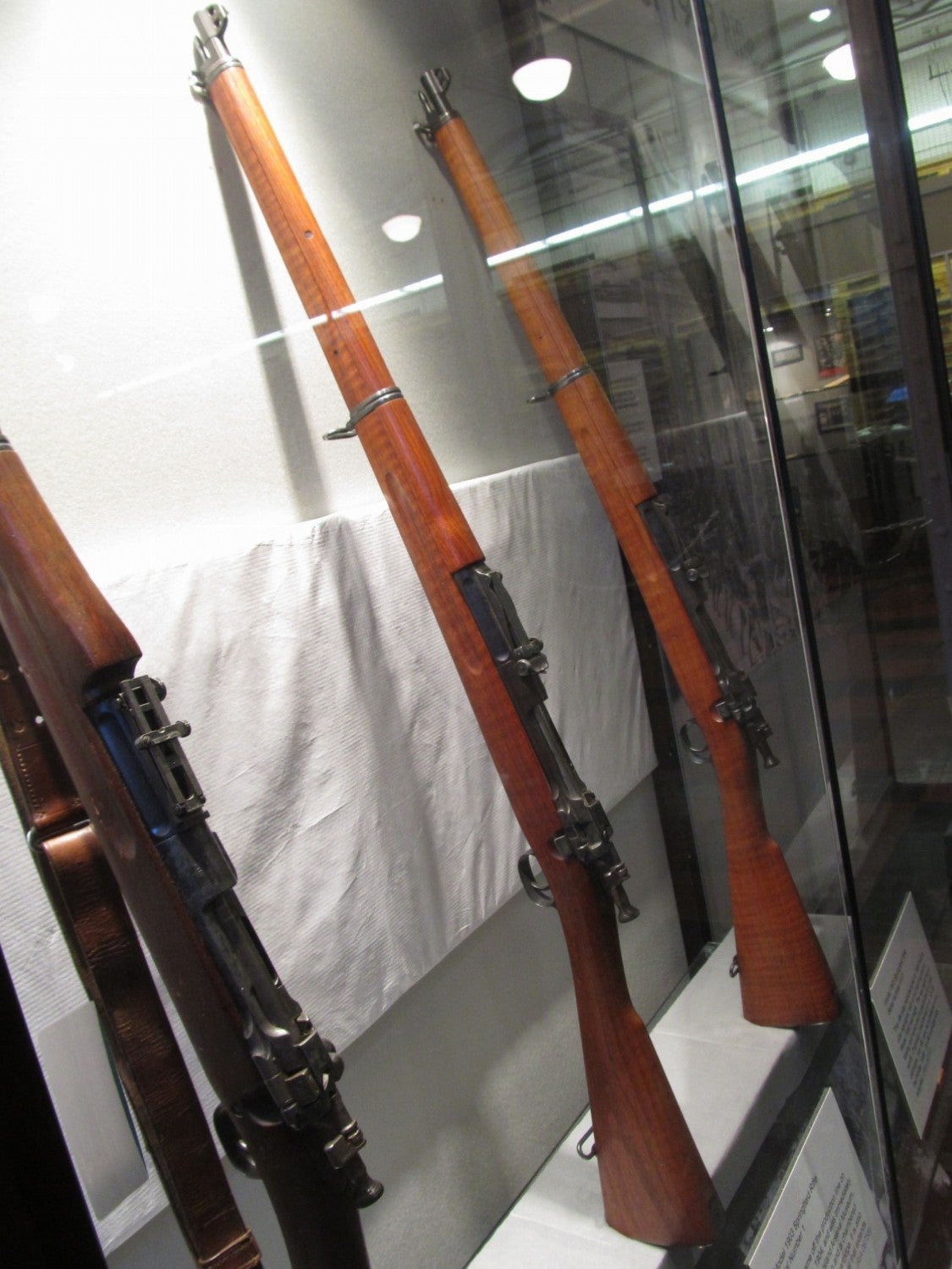
For all you Springfield ’03 lovers out there, 1903 Serial number 1 is the rifle in the middle. It has the rod bayonet and was immediately sent to the museum after it rolled off the assembly line on December 20th, 1904.
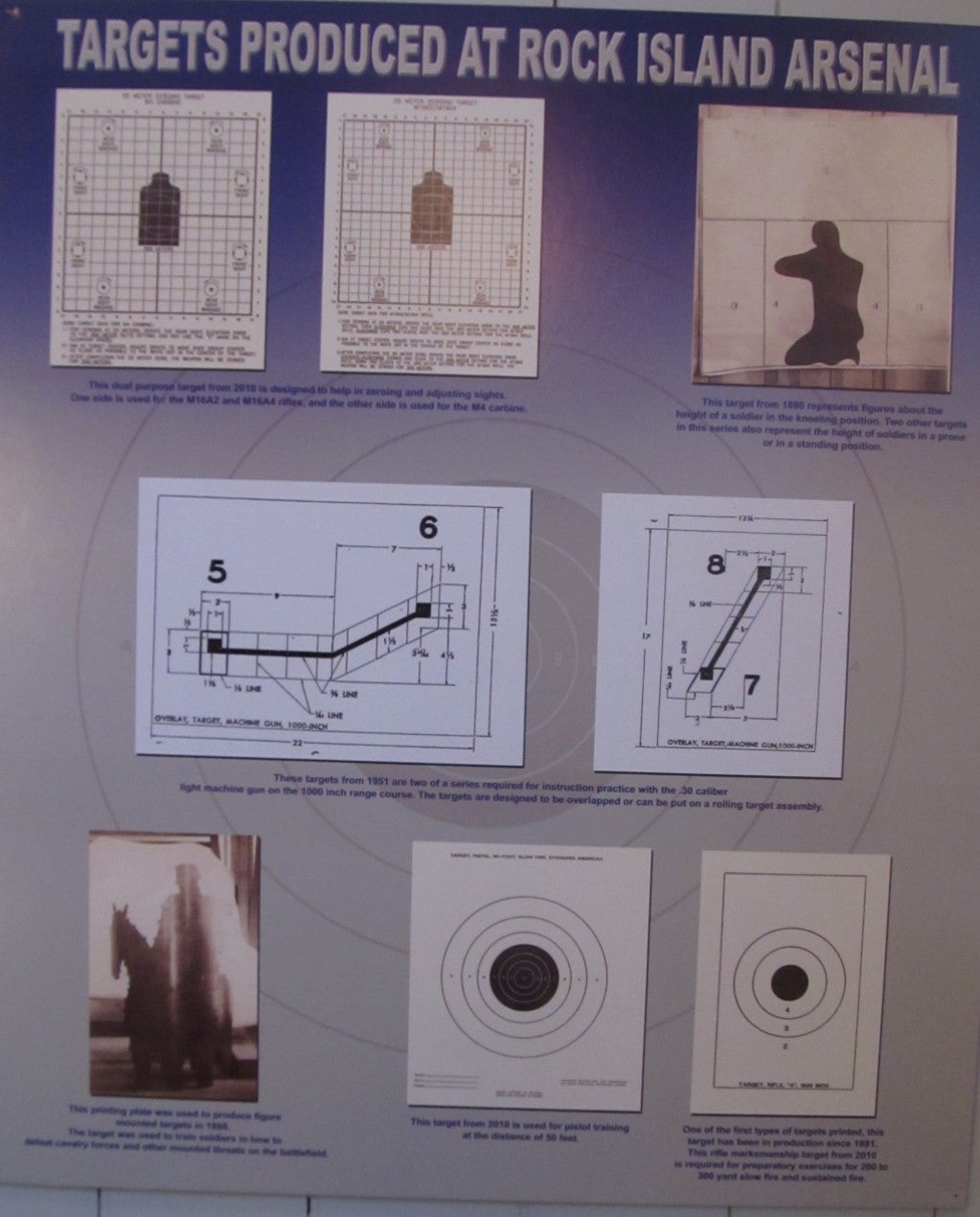
Part of the museums mission is to illustrate the “People, Process’s, and Products” of Rock Island. As mentioned earlier, ordnance is just one part of a multi faceted program going on with the island. Making targets to shoot at is an important part of training for any military.
Today the Museum is apart of the umbrella organization, Center of Military History. This is a U.S. Army affiliated group that controls the funding and organization of more than forty museums across the country, in addition to funding research projects and publications that look at the Army’s role throughout history. On top of the CMH, the Museum is supported by the Rock Island Historical Society, a local organization that helps the Museum in funding, scholarships, internships and various other avenues of support. As mentioned earlier, the museum is situated on an active duty Army post but this simply means all visitors must show proper identification at the gate, and are subject to searches upon entry. The opening times and address for the Museum are as follows-
1 Rock Island Arsenal
Building 60
Rock Island, IL 61299
Hours of Operation:
Tuesday-Saturday
noon – 4:00 p.m.
Closed Sundays and Mondays, all Federal holidays, the day after Thanksgiving, and Christmas Eve.
 Your Privacy Choices
Your Privacy Choices

